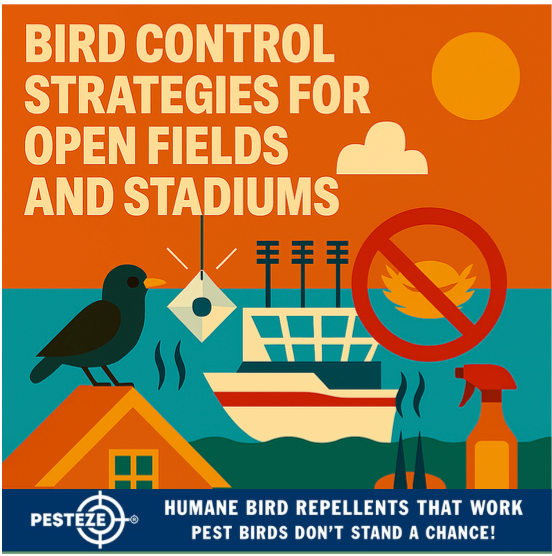BIRD CONTROL STRATEGIES FOR OPEN FIELDS AND STADIUMS

BIRD CONTROL STRATEGIES FOR OPEN FIELDS AND STADIUMS
SUMMARY
Large open spaces like fields and stadiums present unique challenges for bird management, requiring sophisticated, multi-layered approaches to protect public spaces, athletic facilities, and event environments in 2025.
FEATURES
- Public Safety: Comprehensive strategies to minimize bird-related health and safety risks in large-scale venues.
- Event Protection: Advanced methods to prevent bird interference during sports and public gatherings.
- Environmental Management: Intelligent approaches to bird population control in expansive open spaces.
- Technological Innovation: Cutting-edge solutions for bird deterrence in complex architectural environments.
- Economic Preservation: Strategies to reduce maintenance costs and potential event disruptions.
GUIDE DESCRIPTION
Open fields and stadiums represent complex environments that attract bird populations through multiple environmental factors. The combination of extensive open spaces, potential food sources, and architectural structures creates ideal conditions for persistent bird challenges.
Large-scale venues face unique bird management challenges that extend beyond simple deterrence. Birds are attracted to these spaces for multiple reasons, including abundant food remnants, shelter opportunities, and ideal nesting environments. Understanding these attraction mechanisms becomes crucial for developing comprehensive control strategies.
Technological innovations in 2025 provide unprecedented capabilities for bird management in expansive environments. Advanced sensor networks, targeted deterrent systems, and intelligent environmental modification techniques offer sophisticated solutions for large-scale bird control.
Multiple deterrence strategies must be integrated to create effective bird management in open fields and stadiums. Visual disruption techniques, sound-based deterrents, and environmental modifications work together to create comprehensive protection systems. The goal is to create an environment that is simultaneously unwelcoming to birds while maintaining the functional integrity of the space.
Architectural design plays a critical role in bird management for large venues. Strategic modifications to stadium structures, careful landscaping, and intelligent environmental planning can significantly reduce bird attraction and nesting opportunities.
Legal and ecological considerations remain paramount in developing bird control strategies. Many bird species are protected by federal regulations, requiring humane and environmentally responsible approaches to population management.
- Pukhraj Sharma


Comments 0